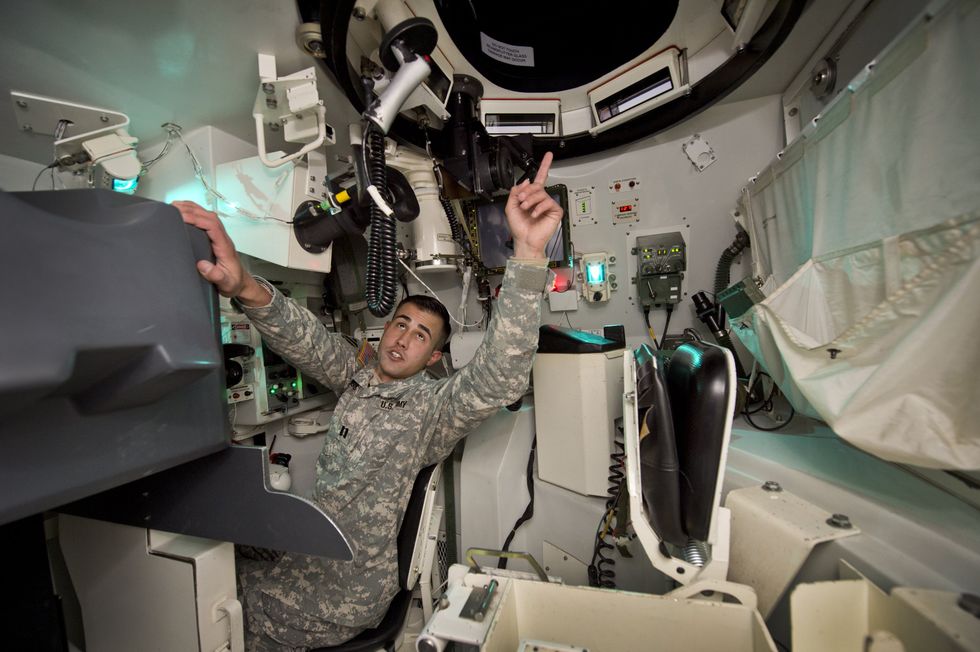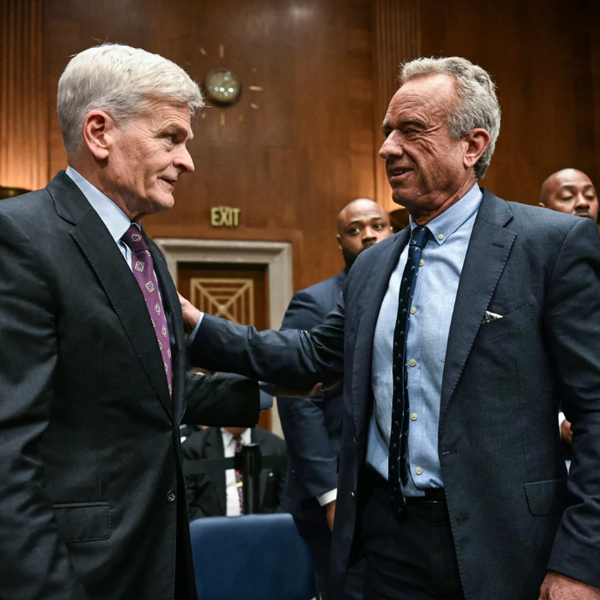ICE? Gestapo?Jawohl, Mein Herr, Wir Haben Eine Gestapo
You want to know how they’re going to do it? How they will hire a new bunch of unvetted, untrained, undisciplined, unidentified thugs in camo and masks, carrying handcuffs and armed with submachineguns? They’re going to pick up the phone and call some pimply-faced little DOGEoid they deposited in the Department of the Treasury, and they’re going to say, “can you type in this payment code, and send a few billion over here to DHS?”
A few billion – a partial payment, just to get things started, you understand -- will be sitting in the U.S. Treasury because the House and Senate just passed Trump’s Big Beautiful Bullshit Bill that is stuffed with either $110 billion or $130 billion, depending on who you talk to, earmarked for chasing down and detaining immigrants who are here in this country without proper immigration or naturalization documents. $30 billion or more is set aside in the bill for hiring, retention and paying bonuses – that’s right, bonuses – for new Immigration and Customs Enforcement (ICE) agents, as many as 10,000 of them.
Ten billion dollars is in the bill to pay for deputizing state and local police forces to aid ICE in arresting, interrogating, temporarily detaining, housing, and helping to deport immigrants. $45 billion is for the construction of new detention facilities like the Alligator Alcatraz concentration camp currently under construction in the Florida Everglades. The American Immigration Council says there is enough money in the bill for up to 116,000 new detention beds. Another $25 billion is dedicated to finishing the building of Trump’s wall on the Southern border, a project that has constructed a barrier of steel posts that those eager to cross the border can bend open with a common automobile tire jack.
Stephen Miller called Trump’s bill “the most essential piece of legislation in the entire Western World, in generations. The BBB will increase by orders of magnitude the scope, scale and speed of removing illegal and criminal aliens.” Today, the pinched-face little Eichmann of ICE posted, “This is our one chance to reverse decades of illicit mass migration.”
You have by now seen dozens of photos and videos of arrests of immigrants – and sometimes, American citizens – by these “squads” of camo-uniformed combat wannabees. That’s how the Department of Homeland Security refers to them, squads, because they don’t have anything else to call them. They’re not the FBI, a highly trained department of law enforcement professionals. They’re not U.S. Marshalls, another official force that is trained to track down and arrest people who have committed a specific set of federal crimes. They’re not agents of the Bureau of Alcohol, Tobacco, and Firearms, a federal department involved in enforcing laws regarding illegal trafficking in each of those areas.
ICE agents are supposed to be trained at the Homeland Security Investigations Academy at GLYNCO, the acronym for Glynn County Naval Air Station, a former naval military facility just outside Brunswick, Georgia. Class sizes at the academy average 24 to 48 students, and the training program lasts about 25 weeks. The first 12 weeks involve “foundational training and methodology concepts, which combines engaging classroom lectures, practical exercises, firearms, fitness and physical techniques,” according to the ICE website. The next 13 weeks are for the Homeland Security Special Agents Investigations program, including “extensive instruction on customs, immigration and other statutory legal authorities, as well as approximately 16 programmatic areas including, but not limited to, transnational gangs, cybercrime, financial investigations, child exploitation, weapons trafficking, strategic technology proliferation, narcotics trafficking and human trafficking.”
The application process involves an entrance exam, background check, medical exam including a drug test, a physical fitness test, and a polygraph exam. According to a website specializing in applying to become Border Patrol and ICE agents, the application process typically takes nine months.
Do you think these armed thugs wearing camo outfits and masks currently roaming the country arresting people have been through 25 weeks of training, and passed all the entrance requirements that take nine months to process?
Not a chance in hell.
They’re hiring brownshirts off the street, some of them probably out of militias like the Oath Keepers and Proud Boys and other wannabes who got turned down when they applied to become a cop of a fireman. You can look at their “uniforms” and see that they weren’t issued by ICE or any other federal agency. They’re wearing their own costumes, slapping a Velcro badge with “POLICE” on the back, getting into rented SUVs, driving where they’re told to go, getting out and making arrests that aren’t even real arrests because they don’t have warrants or any kind of official authority other than Kristi Noem and “Border Czar” Tom Homan, who in a recent speech to a right-wing Christian group, the Faith and Freedom Coalition, said “We need 100,000 beds. So I can fill 100,000 beds. We should be coming to work every day saying, Get everybody you can get. And we got the bed waitin’.”
Homan told his crowd of followers of evangelical political powerbroker Ralph Reed, “If I offend anybody today, I don’t give a shit.” Then he went on to talk about his own version of the so-called “Great Replacement” theory, accusing the Biden administration of “opening the border on purpose” in order to build a power base of immigrants. “They knew exactly what they’re doing,” Homan bellowed. “They saw future political benefit on doing it. They thought millions of people coming into the country are going to be future Democratic voters. They sold this country out for future political power. And to me, that’s treasonous.”
That’s what the hundred billion in Trump’s big bill is about: Republican demographic panic about the future. They are in a campaign to round up, jail, and deport whoever they can find who doesn’t look or sound like white males. The way they’re doing it is with a new Gestapo of white, male camo-wearing thugs who have no official status, no legal authority except what they receive verbally from Homeland Security “leaders” like Noem and Homan and West Wing hall-worms like Stephen Miller.
Trump doesn’t need to declare martial law. The Congress of the United States just passed a law that gives him over $100 billion to put thugs on the street who mask themselves and hide their identities and use guns and camo costumes to intimidate their way into cities, neighborhoods, businesses, and homes and kidnap people whose skin color and native language is different than that of the likes of Stephen Miller and Donald Trump.
The Republican Party just raised their right hands in a Nazi salute and said, “Ja vol, mein Herr” to the dictator who is taking our tax dollars and using them to run roughshod over our Constitution and laws in the name of white supremacy. That’s what is going on in this country right now outside your door. It’s ugly, it’s dangerous, and people are already being beaten and killed because their skin is brown and they don’t have the same papers Elon Musk bought for himself with political connections and white skin when he crossed into the United States from South Africa to pretend he is an American.
With a Supreme Court that just allowed the deportation of eight immigrants to South Sudan – South Sudan, a war zone – and invalidated the orders of lower federal court judges who have displeased Donald Trump, we have ceased being a nation of laws. We are now a nation that has unloosed an unofficial, unaccountable, untrained, unvetted, undisciplined, unidentifiable Gestapo.
The only thing they haven’t yet done is to break into the homes of American citizens and arrest them without showing a warrant or a badge.
With $100 billion in bright, new, crisp bills to play with, that could be next.
Lucian K. Truscott IV has had a 50-year career as a journalist, novelist, and screenwriter. A graduate of West Point, he has covered Watergate, the Stonewall riots, and wars in Lebanon, Iraq, and Afghanistan. Please consider subscribing to his Substack.
Reprinted with permission from Lucian Truscott Newsletter.












